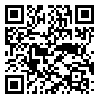Volume 12, Issue 4 (winter 2005)
JSSU 2005, 12(4): 25-32 |
Back to browse issues page
Download citation:
BibTeX | RIS | EndNote | Medlars | ProCite | Reference Manager | RefWorks
Send citation to:



BibTeX | RIS | EndNote | Medlars | ProCite | Reference Manager | RefWorks
Send citation to:
Ansari M, Hajilooi M. Evaluaion of Contammation of Upper Gi Endoscopes with Common Nosocomial Agents in a Hospital of Hamadan. JSSU 2005; 12 (4) :25-32
URL: http://jssu.ssu.ac.ir/article-1-1381-en.html
URL: http://jssu.ssu.ac.ir/article-1-1381-en.html
Abstract: (13516 Views)
Introduction: Fiberoptic techniques have been used for diagnosis and also for treatment of gastrointestinal disorders very largely. Infection is a complication of endoscopy and fiberoptic endoscopy may serve as vehicle for transmission of infection.
Methods: Before doing gastroscopy, all parts of the endoscope were disinfected (as normally done in the ward). Then, samples for culture were taken from the device and at the end of the procedure, again samples from all parts of gastroscope (outer surface, internal canal, water – air pump) were taken and cultured in Blood agar and E.M.B media. Microbiology species and colony count as standard protocol were identified and reported.
Results: 954 Samples were prepared before and after upper gastrointestinal endoscopy. In samples from outer surface of the device before procedure, culture was negative in 90.6% and positive in 9.4% (15 cases), while in samples from the same region after endoscopy, culture was negative in 32.7% and positive in 67.3%. Staphylococcus epidermis was the most common organism. Before endoscopy, sampling and culture from internal canal of device was reported as 88.7% negative culture and 11.3% positive culture with pseudomonas aeruginosa being the most common organism. After endoscopy, internal canal culture was 52.7% negative and 47.2% positive culture. Staphylococcus epidermidis was the most common organism. Air – water Canal samples before endoscopy were 51.6% negative and 48.4% positive. Non fermented gram negative bacilli were the most common organisms. After endoscopy, these samples were 22% negative and 78% positive. Non- fermented gram negative bacilli were the most common organisms.
Conclusion: The microbial contamination of the air-water canal (78%) and outer surface of the device (67.3%) after endoscopy was due to inadequate cleaning and disinfection after completion of procedures.
Keywords: Upper gastro-intestinal endoscopy infection, Disinfectants, Infection, Bacterial Contamination
| Rights and permissions | |
 |
This work is licensed under a Creative Commons Attribution-NonCommercial 4.0 International License. |





